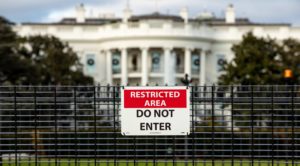
A senior official who spoke to reporters on condition of anonymity estimated the restrictions will free up to 525,000 jobs for Americans.
Many industry groups have complained that these new policies will harm rather than help the U.S. economy recover. Conversely, many immigration hardliners suggest that Trump’s proposed changes don’t go far enough.
Visas affected by new U.S. immigration ban
The new restrictions affect anyone applying abroad for an H-1B high-skilled visa, H-2B seasonal worker visa, L-1 executive visa, or a J-1 scholar visa. There will be exemptions for food processing workers and healthcare professionals assisting with the coronavirus response.
Green card processing for anyone outside the U.S. also remains suspended until at least the end of the year.
Changes to U.S. asylum seekers policy
The new asylum regulations, scheduled to be enacted on August 25, will make it considerably harder, or impossible, for many asylum seekers to survive in the U.S. The new regulations, among other things, extends the waiting time for a work permit from 150 days, to a year. It also prevents asylum seekers from obtaining a work permit if they crossed the border illegally.
More changes coming to the H-1B system
The administration is proposing a new way of awarding H-1B visas. Under consideration is awarding H-1Bs by highest salary instead of by lottery.
While the move to further restrict immigration the U.S. was not unexpected, these repeated changes to the U.S. immigration system and the rhetoric from the administration have many applicants concerned about their future in the U.S.
By far, the hardest-hit group of people by this new executive order are Indian nationals. There are currently 278,491 Indian citizens who hold an H1-B visa, approximately 72% of all H-1B visas in the U.S.
America’s loss is Canada’s gain
The contrast between the U.S. response to high COVID-19 related unemployment compared to Canada exemplifies the differences between the two countries. In Canada, immigrants are viewed as job creators. In the U.S., they are viewed as a threat to the American worker.
Perhaps as a response to the changing American immigration policy, many Indian students are transitioning away from U.S. schools in favour of Canada. Many will immigrate here permanently after their studies but you don’t need to study in Canada to obtain Canadian permanent residence.
Ways to get a “Canadian green card”
Express Entry
Express Entry is the most common way to obtain Canadian permanent residence. Younger, highly skilled workers with strong language ability in English and/or French will rank higher.
Provincial Nominee Programs
Each province of Canada has separate nominee programs. These programs usually target applicants with specific skills essential to the economy of the province or those who have close connections to the region.
Studying in Canada
Studying in Canada is a very popular option for many. Canada offers renowned educational institutions and allows students to work while studying. If you study eight months or more, full-time, you will be eligible to apply for a post-graduate work permit. This can allow you to obtain Canadian work experience that can help you secure permanent residence.
Working in Canada
Unless you study and obtain a post-graduate work permit, obtaining a work permit to Canada typically requires a job offer. There are some exceptions, for example working holiday visas or similar programs. Once you have work experience, it opens a lot of options to stay in Canada permanently, whether it is from a provincial nomination or through Express entry.